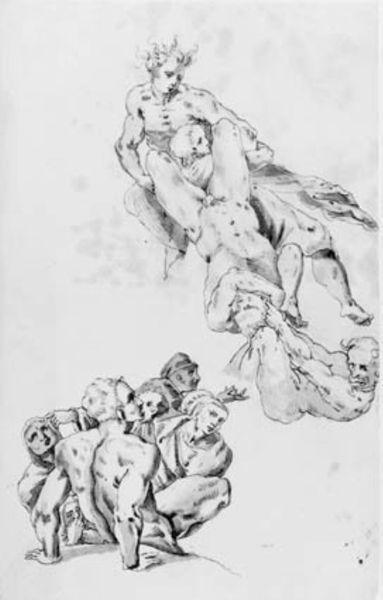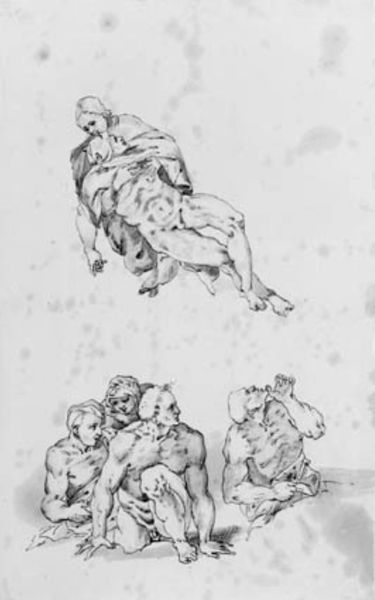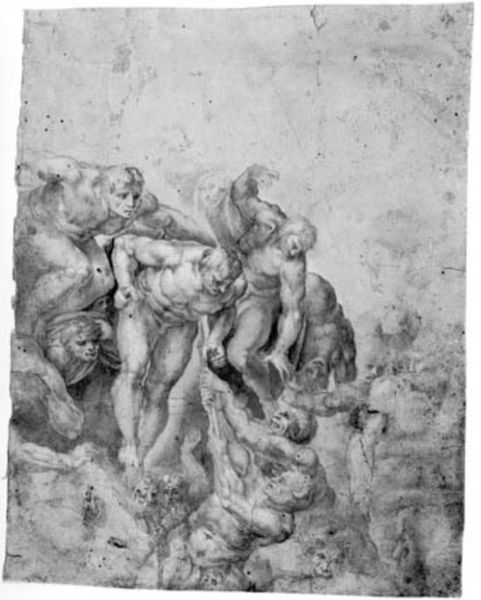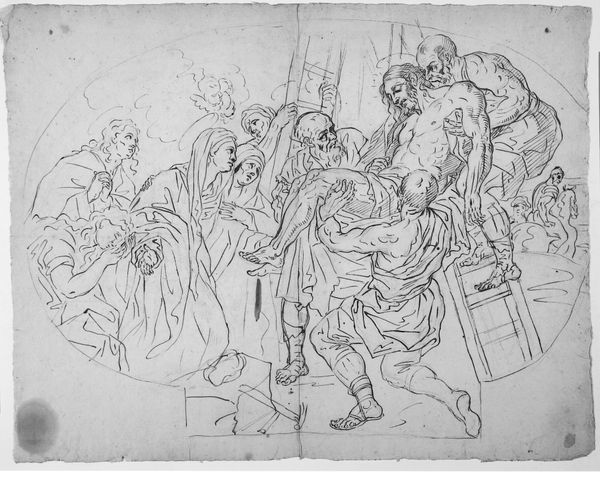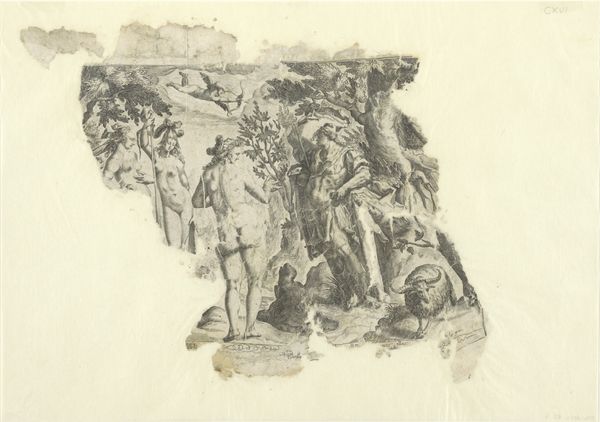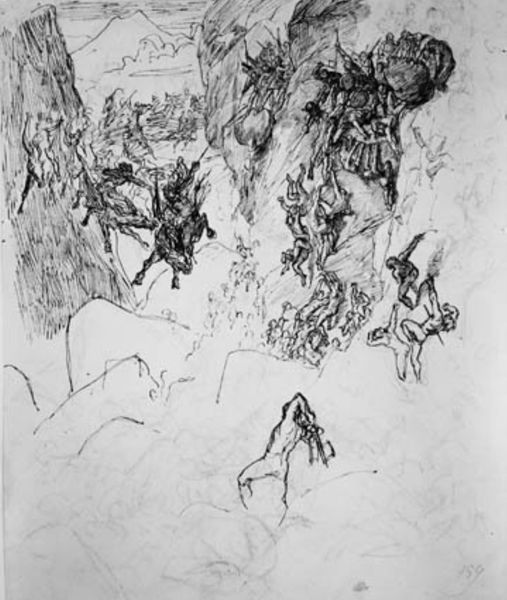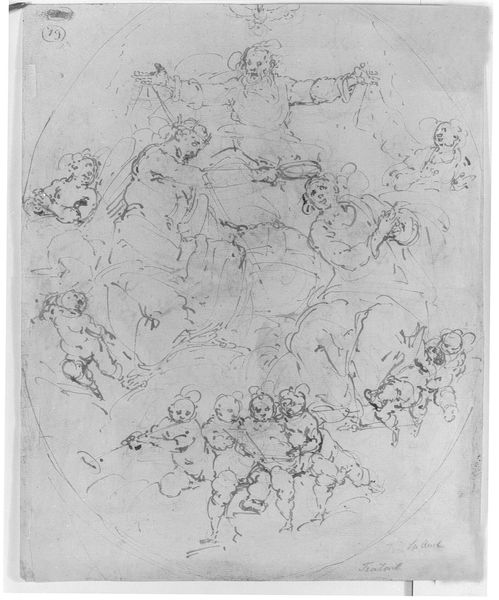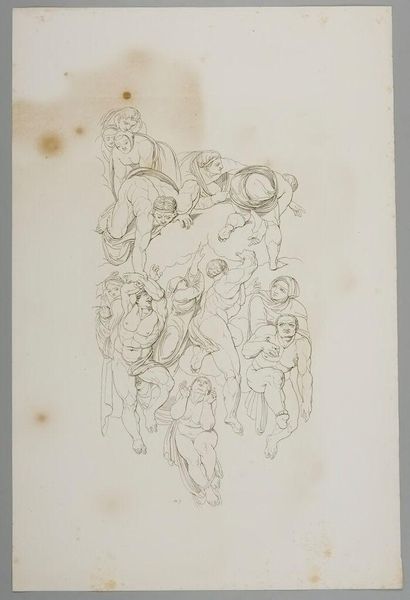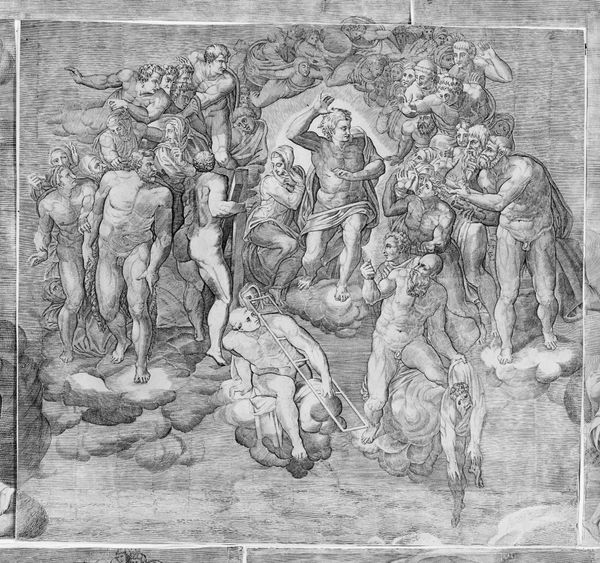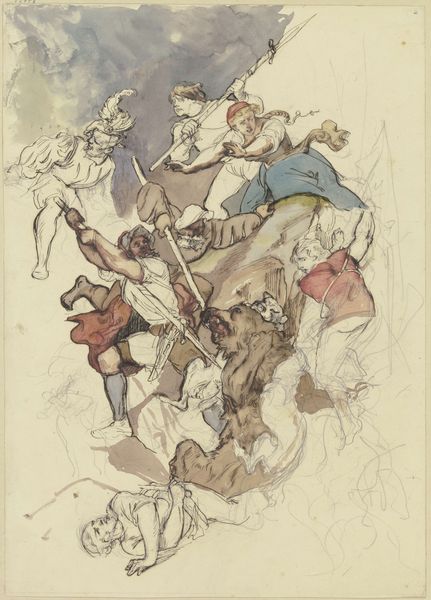
Ascending nudes with the Cross from the left lunette of the Last Judgement, Sistine Chapel 18th century
0:00
0:00
drawing, ink
#
drawing
#
figuration
#
11_renaissance
#
ink
#
history-painting
#
academic-art
#
nude
Dimensions: 319 mm (height) x 288 mm (width) (bladmaal)
Curator: This ink drawing, dating from the 18th century, is titled "Ascending nudes with the Cross from the left lunette of the Last Judgement, Sistine Chapel," and is currently housed at the SMK, Statens Museum for Kunst. The scene shows multiple figures floating up to carry a crucifix. Editor: It strikes me as surprisingly delicate for a subject of such monumental theological weight. The monochrome palette, along with the somewhat nebulous forms, lend it an ethereal, almost dreamlike quality. Curator: Indeed. The choice of ink as a medium, a common but relatively accessible and reproducible material, allowed for efficient preparation of studies. The artist—anonymous, interestingly enough—would likely have used it to quickly sketch out compositional ideas and anatomical studies for larger-scale commissions, emphasizing the labor-intensive nature of monumental art production during that period. The existence of preparatory drawings emphasizes artistic skill. Editor: Agreed. But look at the way the artist uses line to define musculature and drapery. The composition is structured in a dynamic, spiraling form that pulls the eye upwards, reinforced by the direction of the ascending figures and culminating in the cross itself, the fulcrum of the piece. The values – primarily varying shades of gray – enhance this movement and contribute to the image’s spiritual heft, especially when framed by clouds. Curator: I’m drawn to the social context of this particular image—nudes, a cross, ascending. Religious art, especially depictions of salvation or judgment, served as both theological instruction and a reflection of social power dynamics. Who commissioned this piece, and what role did these specific figures and symbols play in reinforcing religious and social hierarchies? We should also explore the material culture surrounding such images—where would this have been displayed, who had access to it, and what were the intended effects? Editor: Precisely. Whether this drawing represents completed vision for this section or something that may have varied by the time the frescos were being painted at the Sistine Chapel. And yet the strength of its inherent qualities - its line, composition, and careful tonal modeling—give the artwork enduring presence that transcends its functional origin. Curator: A crucial point. Considering both its aesthetic power and historical relevance enables a fuller appreciation for it. Editor: Precisely—it seems a balanced interpretation requires attention to all material components, while letting its intrinsic impact be.
Comments
No comments
Be the first to comment and join the conversation on the ultimate creative platform.

